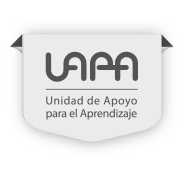- 1 -
The story of English language
Let’s watch a short video about the history of the English language, but also try to get information on the history of English language.
If you need subtitles, there’s an option in the tool bar of the video so that you can understand it better.
You may watch it as many times as you need in order to solve the next exercise correctly.
The History of English in 10 minutes
Mauro Gilmozzi. (February 16th 2013). Copy of The History of English in 10 Minutes - Sub ENG. [video].
Retrieved on March 2017 from https://goo.gl/3sX6OE
- 2 -
English language history: starring characters
So, what do you think? Did you ever wonder English language had such an interesting history?
Let’s use the information from the video to continue learning English. But first, how good is your memory?
Identify whichever character or group did as part of the English language history.
Drag the different elements from the right column to the appropriate space in the left column. You have unlimited attempts to answer every item. You can know your score at the end of the exercise.
This exercise will not be part of the evaluation, though you might want to try to solve it so you can get familiarized with the topic.
If necessary, watch the video again by following the next link:
- 3 -
Summarizing the English language history
It is always important to remember the most important facts in a long history, it helps us get a wider knowledge of the world and understand why some things are the way they are nowadays.
Paraphrase. (s/f). En Merriam-Webster Inc. Retrieved on October 10th 2016 from https://goo.gl/1mvau8
In the following exercise, you’ll find a paraphrase of the history in the video.
Select the most appropriate verb for every statement so that it summarizes part of the history.
Drag the different options to the appropriate spaces to complete the sentences. You have two attempts to answer the exercise. You can know your score at the end of the exercise.
You can know your score at the end of the exercise. Remember that this exercise will not be part of the final score, just do your best!











